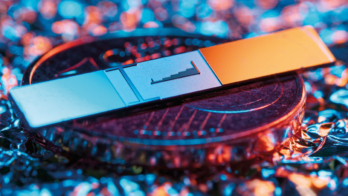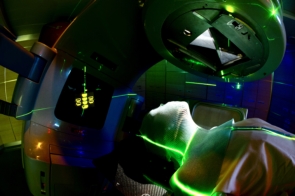
Image credits: LHCb, left, and ALICE collaborations.
After the long maintenance and consolidation campaign carried out during the first long shutdown, LS1, the early part of 2015 has been dominated by tests and magnet training to prepare the LHC for a collision energy of 13 TeV. With all of the hardware and software systems to be checked, a total of more than 10,000 test steps needed to be performed and analysed on the LHC’s magnet circuits.
The LHC’s backbone consists of 1232 superconducting dipole magnets with a field of up to 8.33 T operating in superfluid helium at 1.9 K, together with more than 500 superconducting quadrupole magnets operating at 4.2 K or 1.9 K. Many other superconducting and normal resistive magnets are used to allow the correction of all beam parameters, bringing the total number of magnets to more than 10,000. About 1700 power converters are necessary to feed the superconducting circuits.
The dipole magnets in the first of the LHC’s eight sectors were trained successfully to nominal current in December, and training continued throughout the first three months of 2015. Although all of the dipole magnets were tested individually before installation, they had to be trained together in the tunnel up to 10,980 A, the current that corresponds to a beam energy of 6.5 TeV.
Training involves repetitive quenches before a superconducting magnet reaches the target magnetic field. The quenches are caused by the sudden release of electromechanical stresses and a local increase in temperature that triggers a change from the superconductive to the resistive state. The entire coil is then warmed up and cooled down again – for the LHC dipoles, this might take several hours. The magnet protection system is crucial for detecting a quench and safely extracting the energy stored in the circuits – about 1 GJ per dipole circuit at nominal current.
The typical time needed to commission a dipole circuit fully is in the order of three to five weeks, and all of the interlock and protection systems have to be tested, both before and while ramping-up the current in steps. By mid-February, the dipole circuits in three sectors had been trained to the level equivalent to 6.5 TeV, with the total number of quenches confirming the initial prediction of about 100 quenches for all of the dipoles in the machine. By early March, four sectors were fully trained for 6.5-TeV operation, with a fifth well into its training programme.
If commissioning remains on schedule, the LHC should restart towards the end of March
On the weekend of 7–8 March, operators performed injection tests with beams of protons being sent part way around the LHC. Beam 1 passed through the ALICE detector up to point 3 of the LHC, where it was dumped on a collimator, and beam 2 went through the LHCb detector up to the beam dump at point 6. The team recorded various parameters, including the timings of the injection kickers and the beam trajectory in the injection lines and LHC beam pipe.
The ALICE and LHCb collaborations prepared their experiments to receive pulses of particles and recorded “splash” events as the particles travelled through their detectors. LHCb used the tests to commission the detector and the data-acquisition system, as well as to perform detector studies and alignments of the different sub-detectors. The ALICE collaboration meanwhile used muons originating from the Super Proton Synchrotron beam dump for timing studies of the trigger and to align the muon spectrometer.
If commissioning remains on schedule, the LHC should restart towards the end of March, with first collisions at 13 TeV in late May/early June.





